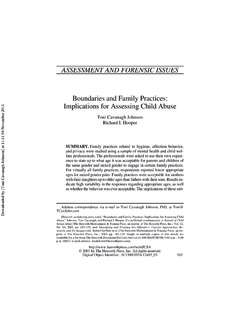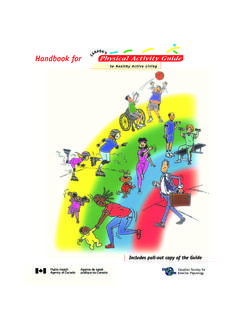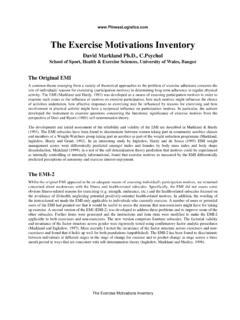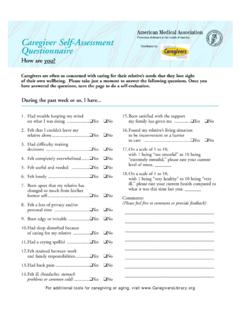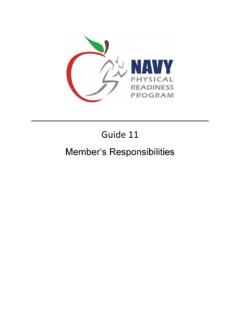Transcription of Sibling Family Practices: Guidelines for Healthy …
1 339 Journal of Child Sexual Abuse, 18:339 354, 2009 Copyright Taylor & Francis Group, LLC ISSN: 1053-8712 print/1547-0679 onlineDOI: of Child Sexual Abuse, Vol. 18, No. 3, April 2009: pp. 1 27 Journal of Child Sexual AbuseSibling Family practices : Guidelines for Healthy BoundariesGuidelines for Healthy BoundariesT. C. Johnson et CAVANAGH JOHNSONI ndependent Practice of Psychology, South Pasadena, California, USABEVAN EMMA HUANGCSIRO Mathematical and Information Sciences, Brisbane, AustraliaPIPPA M. SIMPSONM edical College of Wisconsin, Milwaukee, Wisconsin, USAA questionnaire was given to 500 mental health and child welfareprofessionals asking for maximum acceptable ages for siblings toengage jointly in certain Family practices related to hygiene, affec-tion, and privacy.
2 A large proportion of respondents felt it wasnever acceptable for siblings to take showers together (40%), kisson the mouth (37%), or toilet together (32%). Some significantdifferences occurred based on the gender of the older siblingwithin sets of same gender or mixed gender pairs, with older broth-ers being acceptable up to lower ages than older sisters. The effectsof child abuse, age, race, and the amount of education on therespondents answers are investigated. The limitations of the ageguidelines are child sexual abuse, child abuse, boundaries,siblings, co-bathing, co-sleepingIn the early 1980s and 1990s, the recorded incidence of problematic andforced sexual contact between siblings 12 and younger increased, and itwas surmised that the Sibling who instigated the abuse was almost certainlya victim of sexual abuse (Friedrich & Luecke, 1988; Johnson, 1988, 1989).
3 Asresearch in the area of the sexual behavior of children 12 and youngerReceived 24 April 2007; revised 28 February 2009; accepted 15 March correspondence to Toni Cavanagh Johnson, 1101 Fremont Avenue, Suite 101,South Pasadena, CA 91030. E-mail: C. Johnson et , it became evident that many children who had sexual behaviorproblems had not been sexually abused (Drach, Wientzen, & Ricci, 2001;Friedrich et al., 2001; Silovsky & Niec, 2002). Indeed, many factors canincrease the problematic sexual behaviors of young children (Friedrich,Fisher, Broughton, Houston, & Shafran, 1998; Friedrich, 2002; Johnson,2004, 2007).
4 Friedrich and colleagues (1998) indicated that certain Family practicesare related to an increased variety of sexual behaviors in children. A factorlabeled Family sexuality was described. It is comprised of co-sleeping, co-bathing, Family nudity, opportunities to see adult movies, and opportunitiesto witness sexual intercourse. It was found that a more relaxed approach tothese Family practices accounts for of the variance when looking atsexual behaviors in children. Because these more relaxed Family practicescan increase children s sexual behaviors and their confusion about bound-aries and sexuality, Friedrich (2002) created the Safety Checklist.
5 The SafetyChecklist asks parents about many issues related to boundaries includingco-sleeping, co-bathing, and Family nudity in the home. Johnson (1999)described extensive boundary violations that may occur in the homes ofyoung children who engage in problematic sexual behaviors. These bound-ary violations include behaviors that decrease an individual s emotional andphysical privacy, increase intrusive interpersonal practices , and sexualizethe atmosphere in the significant number of families live together in one room due topoverty.
6 In these situations parents and children may share baths, toilets,and beds. Even when there are adequate sleeping facilities, some familiessleep together in the same bed due to choice. In the vast majority offamilies this causes no problems. Yet, in some cases the poor boundaries inthe home can be linked to sexual abuse or children with sexual the premise that boundary violations can lead to increased sexualbehaviors in children and an environment that may be ripe for sexual abusein the home, Johnson and Hooper (2003) studied the ages up to which cer-tain Family practices were appropriate between parents and children.
7 Thefamily practices studied included many of the same practices studied in thecurrent study. More than 700 mental health and child welfare professionalsresponded to an anonymous questionnaire regarding these practices . Forvirtually all of the Family practices studied, respondents selected loweracceptable mean ages for mixed gender Family members than for samegender pairs. This differed by sex, with Family practices considered accept-able for mothers with their daughters up to older ages than fathers withtheir sons.
8 Results indicated high variability in the responses regardingappropriate ages for the Family practices studied as well as whether thebehavior was ever acceptable between a parent and child. There were nosignificant differences found based on the age, gender, or ethnicity of theGuidelines for Healthy Boundaries341respondents. This study offered some Guidelines for professionals whenassessing the boundaries in the home when there were concerns aboutsexual abuse or increased sexual behaviors in current study is a continuation of the Johnson and Hooper (2003)study.
9 In this study, we examined the ages up to which mental health andchild protective services workers think it is suitable for mixed gender andsame gender siblings to engage in Family practices related to hygiene, affec-tion, and privacy issues. Delineating the ages deemed acceptable for certainfamily practices between siblings may aid families in setting appropriateboundaries, which in turn may curtail sexual behaviors between childrenthat go beyond what is natural and Healthy . Since there are no guidepostsavailable in the empirical literature, parents and practitioners have until nowbased their judgments on their own beliefs and experiences.
10 This researchwill provide some preliminary guideposts for this topic based on theopinions of 500 child protective services and mental health sample of 500 mental health and child welfare professionals wascollected from participants at lectures given by the first author in New York,Indiana, Hawaii, California, and Idaho in 2004. When the participants regis-tered for the lecture, they were given a questionnaire along with the hand-outs. Each participant was told that the questionnaire was for research byDr.
